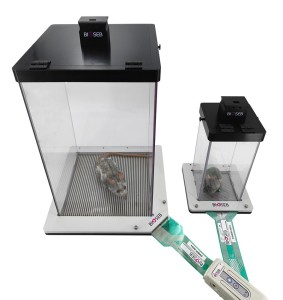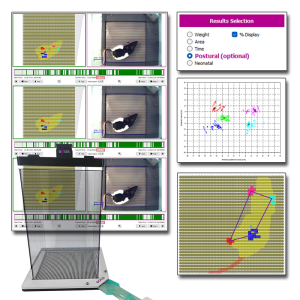Authors
A Stark, R Schwenk, G Wack, G Zuchtriegel et al
Lab
Institute of Pharmaceutical Biology, Faculty of Biochemistry, Chemistry and Pharmacy, Goethe University Frankfurt, Frankfurt, Germany
Journal
The FASEB Journal
Abstract
The alkaloid narciclasine has been characterized extensively as an anticancer compound. Accumulating evidence suggests that narciclasine has anti-inflammatory potential; however, the underlying mechanism remains poorly understood. We hypothesized that narciclasine affects the activation of endothelial cells (ECs), a hallmark of inflammatory processes, which is a prerequisite for leukocyte-EC interaction. Thus, we aimed to investigate narciclasineÕs action on this process in vivo and to analyze the underlying mechanisms in vitro. In a murine peritonitis model, narciclasine reduced leukocyte infiltration, proinflammatory cytokine expression, and inflammation-associated abdominal pain. Moreover, narciclasine decreased rolling and blocked adhesion and transmigration of leukocytes in vivo. In cultured ECs, narciclasine inhibited the expression of cell adhesion molecules intercellular adhesion molecule-1, vascular cell adhesion molecule-1, and E-selectin and blocked crucial steps of the NF-kappaB activation cascade: NF-kappaB promotor activity, p65 nuclear translocation, inhibitor of kappaB alpha (IkappaBalpha) phosphorylation and degradation, and I_Balpha kinase beta and TGF-betaÐactivated kinase 1 phosphorylation. Interestingly, these effects were based on the narciclasine-triggered loss of TNF receptor 1 (TNFR1). Our study highlights narciclasine as an interesting anti-inflammatory compound that effectively inhibits the interaction of leukocytes with ECs by blocking endothelial activation processes. Most importantly, we showed that the observed inhibitory action of narciclasine on TNF-triggered signaling pathways is based on the loss of TNFR1.
BIOSEB Instruments Used
Dynamic Weight Bearing 2.0 (BIO-DWB-DUAL)
Source :

 Pain - Thermal Allodynia / Hyperalgesia
Pain - Thermal Allodynia / Hyperalgesia Pain - Spontaneous Pain - Postural Deficit
Pain - Spontaneous Pain - Postural Deficit Pain - Mechanical Allodynia / Hyperalgesia
Pain - Mechanical Allodynia / Hyperalgesia Learning/Memory - Attention - Addiction
Learning/Memory - Attention - Addiction Physiology & Respiratory Research
Physiology & Respiratory Research











![Dynamic Weight Bearing 2.0 – Postural Module [Add-on]](https://bioseb.com/733-home_default/dynamic-weight-bearing-20-add-on-postural-module.jpg)
























 Pain
Pain Central Nervous System (CNS)
Central Nervous System (CNS) Neurodegeneration
Neurodegeneration Sensory system
Sensory system Motor control
Motor control Mood Disorders
Mood Disorders Other disorders
Other disorders Muscular system
Muscular system Joints
Joints Metabolism
Metabolism Cross-disciplinary subjects
Cross-disciplinary subjects CONFERENCES & MEETINGS
CONFERENCES & MEETINGS 
